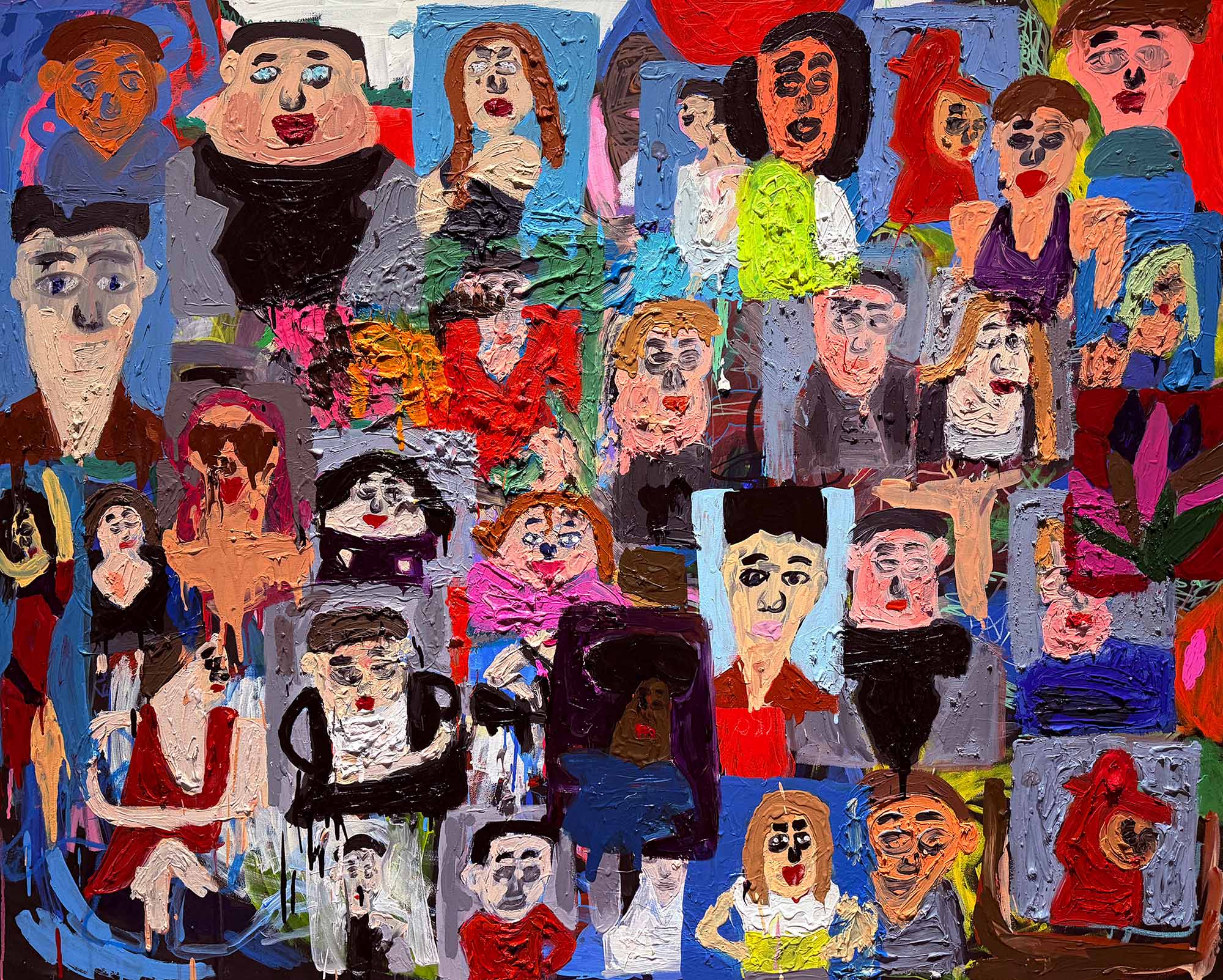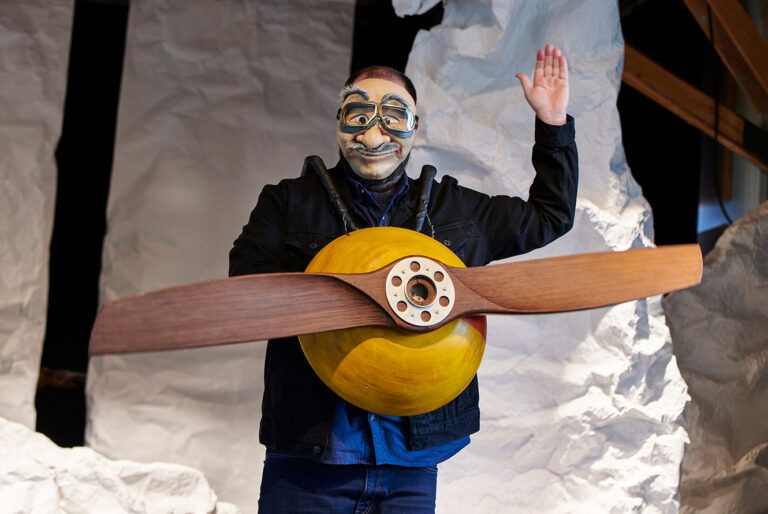
The work in Without Saying is a conversation, just one you have to shut up to hear. It’s a big ask, considering that kind of silence isn’t something most people are comfortable with, but that’s one of the points of the exhibition, on at the Yukon Arts Centre (YAC) until August 29.
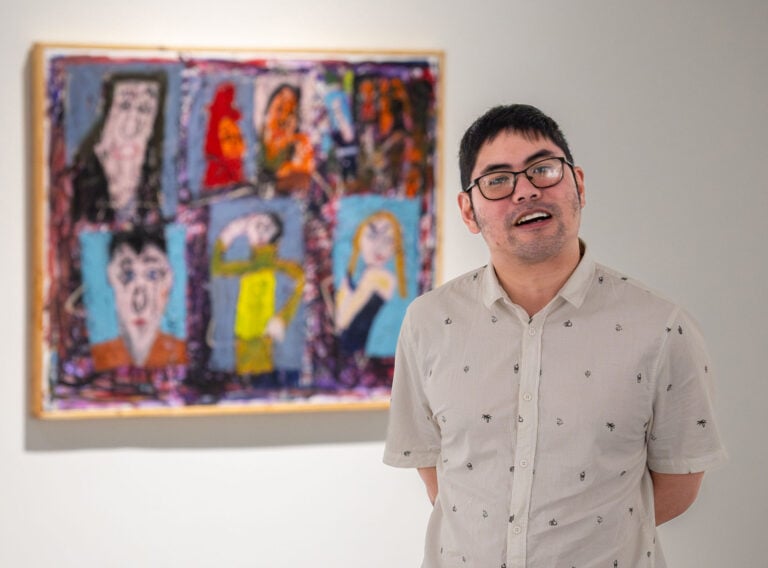
“A lot of the time, people with disabilities are expected to enter into our world,” says Phoebe Gonzales Rohrbacher, co-curator of the show, along with Mary Bradshaw, YAC’s director of visual arts. Without Saying invites viewers into the world of two Whitehorse artists, one of which is Ernest Chua, a self-trained painter who is autistic and largely non-verbal.
Chua uses silence and stillness as a path to the paintings he creates at Teegatha’Oh Zheh Progressive Art Studio, where self-taught artists with developmental disabilities can create. His work is bright and colourful. It includes a mix of representative and abstract pieces that use figures, text, heavily layered paint, patterns and symbols to convey the ideas that interest Chua.
They come to him so fast, says Gonzales Rohrbacher, who sometimes supports Chua at Teegatha’Oh Zheh, it’s almost like he can’t work fast enough. He doesn’t talk about his work, or why he makes the choices he does and, to Colin Dorward, that’s part of the appeal.
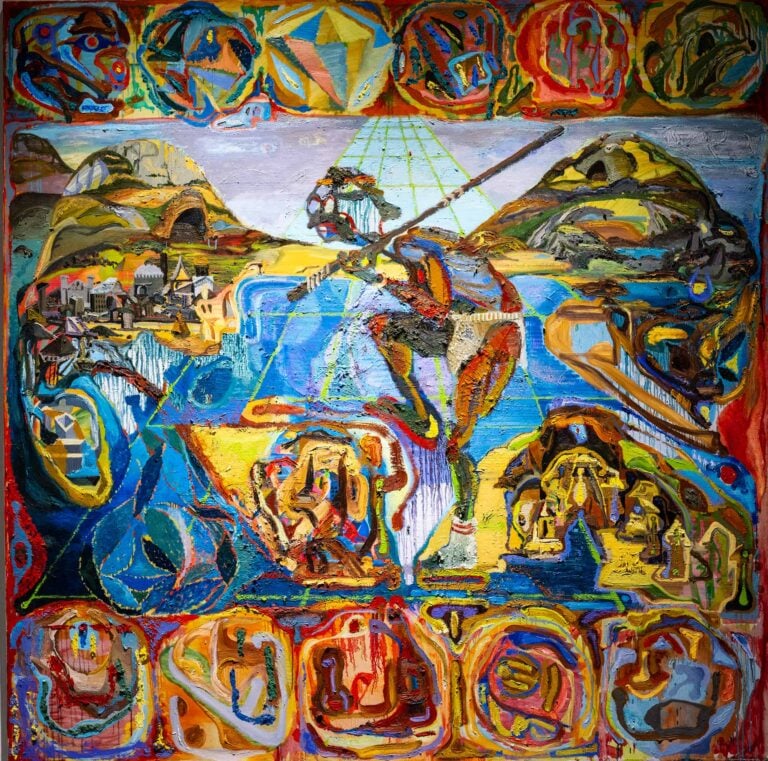
Dorward is the other artist included in Without Saying. He and Chua don’t know each other in the traditional sense. Dorward, a neurotypical painter with a PhD in visual art, became aware of Chua’s work after Chua had a show at Northern Front Studio in 2024. In the months that followed, Dorward says he saw Chua’s work level up with every new theme or idea Chua explored.
Chua had a different perspective, one that Dorward didn’t necessarily understand, even though their work shares similarities.
“There’s a shared language in their work because they both do abstraction, deep layering and a lot of symbols,” says Gonzales Rohrbacher. “Part of the idea of this show was for people to look at the work, not in contrast to each other, but in conversation with itself.”
That’s because their work is the main point of contact for the two painters, who have never had a two-way conversation with each other. The mystery of Chua’s art is one of the things that draws Dorward to it.
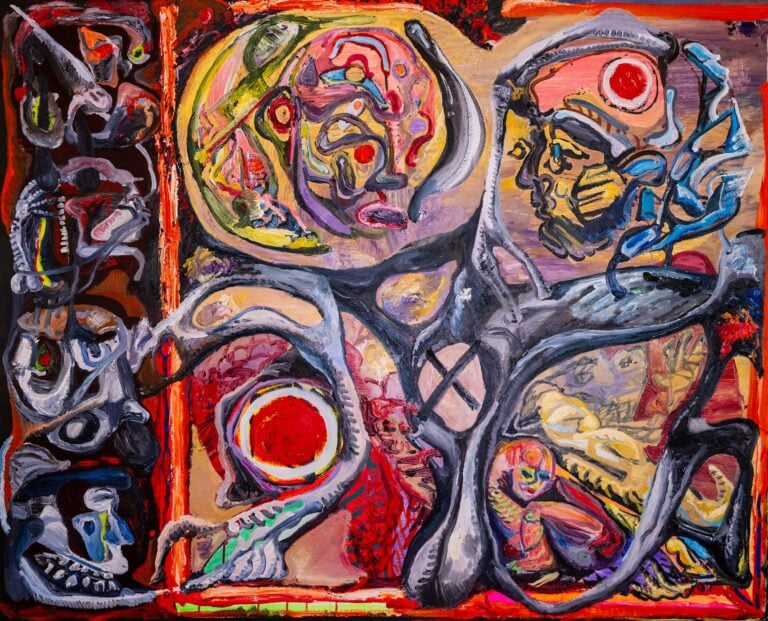
“We are in a climate right now and that climate is art is based on your identity and the art needs to express a very digestible political point,” he says. “Ernest can’t do that and probably doesn’t want to do that. So, in a way, it’s really subversive to place his work in that context.”
At the same time, Dorward is aware of the infatuation the art world can have with so-called “outsider art,” work that’s made by people who weren’t traditionally trained. It’s a term that kind of purports to invite people in, but because it was invented by people already on the inside, it doesn’t necessarily function like that. It’s still divisive in a way that Without Saying aims to get rid of.
“The important thing is to talk about the art for what it is and not who made it,” Dorward says. That’s how artists like Chua can be integrated in a non-tokenized way.

Dorward says this can also happen through the type of work Gonzales Rohrbacher does at Teegatha’Oh Zheh. Chua is dedicated to exploring and making exciting work, but it’s also helpful that he has the space and support of a place like the Progressive Art Studio, which doesn’t operate like your standard art class.
“We’re supporting artists to make art and develop their own unique practice,” says Gonzales Rohrbacher. “The idea is to remove any sort of didactic element from the studio. So we’re not all going to make a pumpkin that looks the same. [Each artist is] totally driven by their vision using the highest quality materials we can afford and facilitated by peer relationships with artists.”
Without Saying is a visual demonstration of one of those relationships. Dorward isn’t in a staff or volunteer role at staff at Teegatha’Oh Zheh. He’s an artist in the community. So is Chua. They might come at their work in entirely different ways, but the end result is ultimately as easy to define as Gonzales Rohrbacher does—a show from two artists who make really good art.
The exhibit can be viewed Monday-Friday, 10am-5pm.
